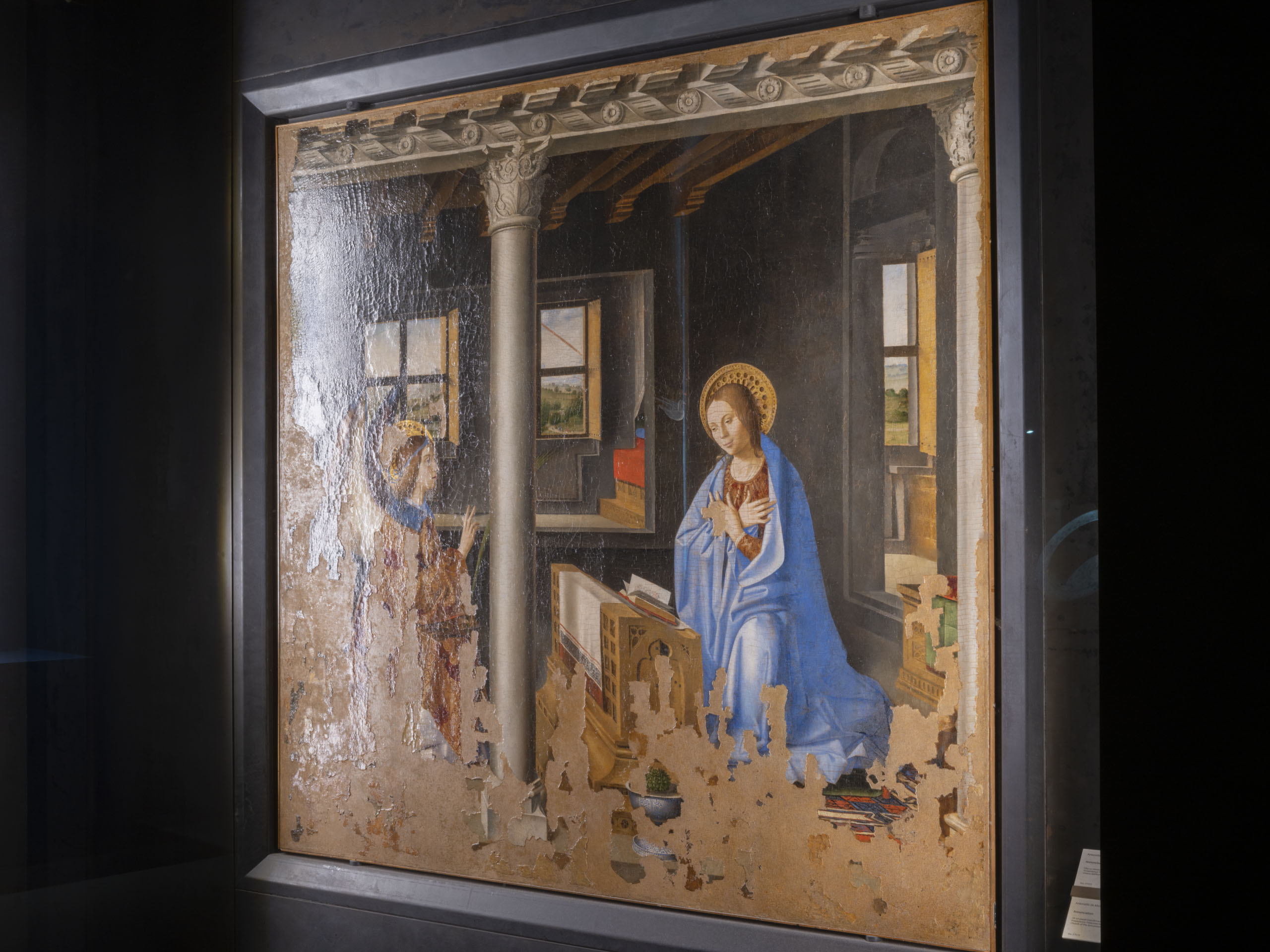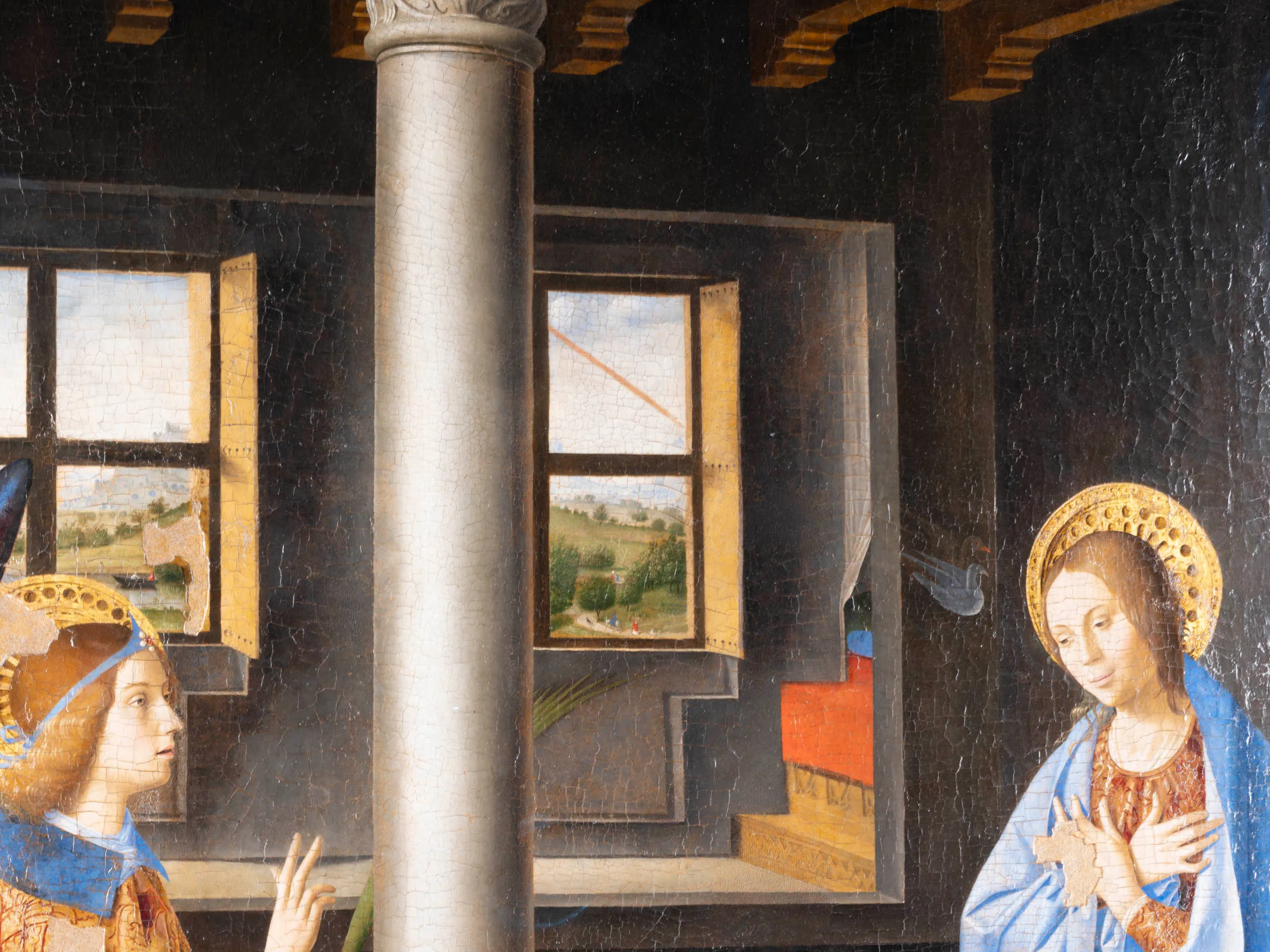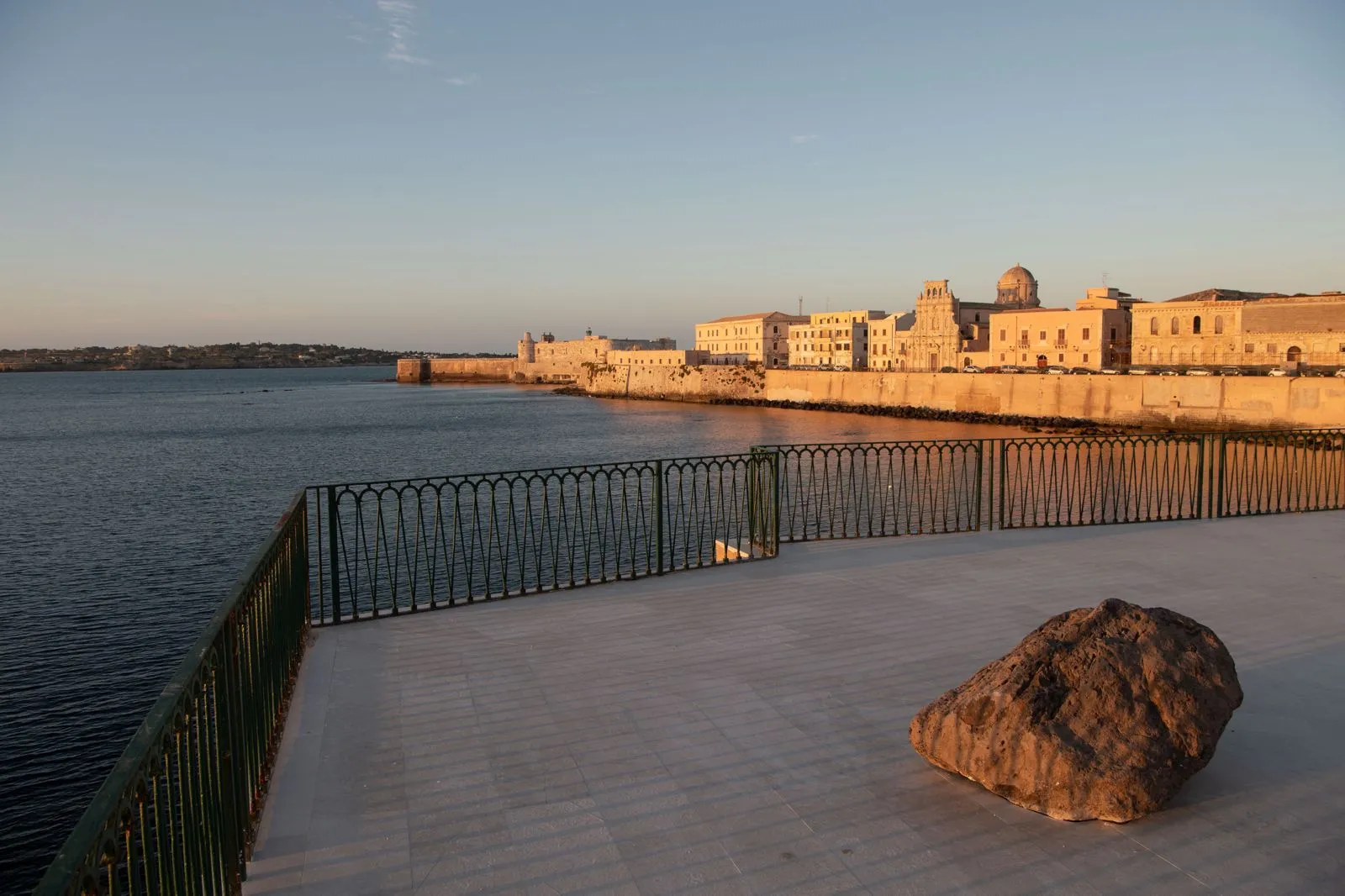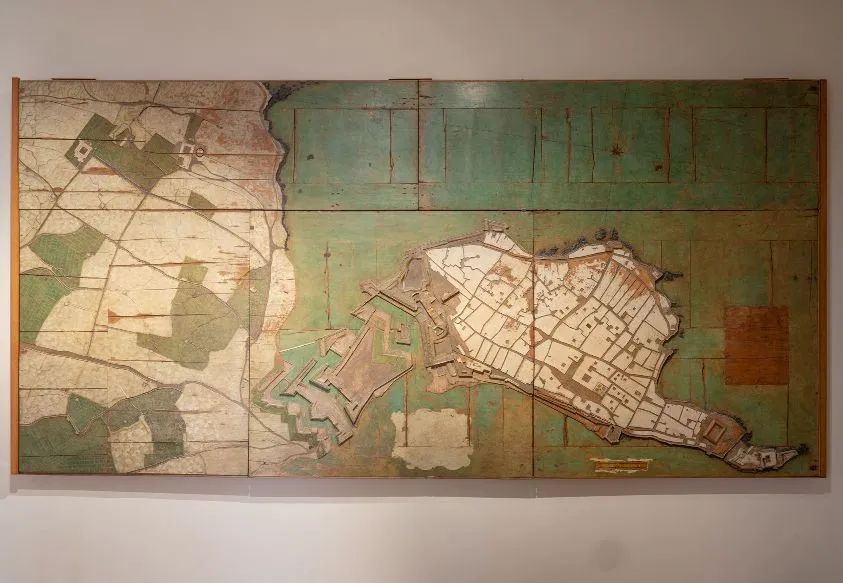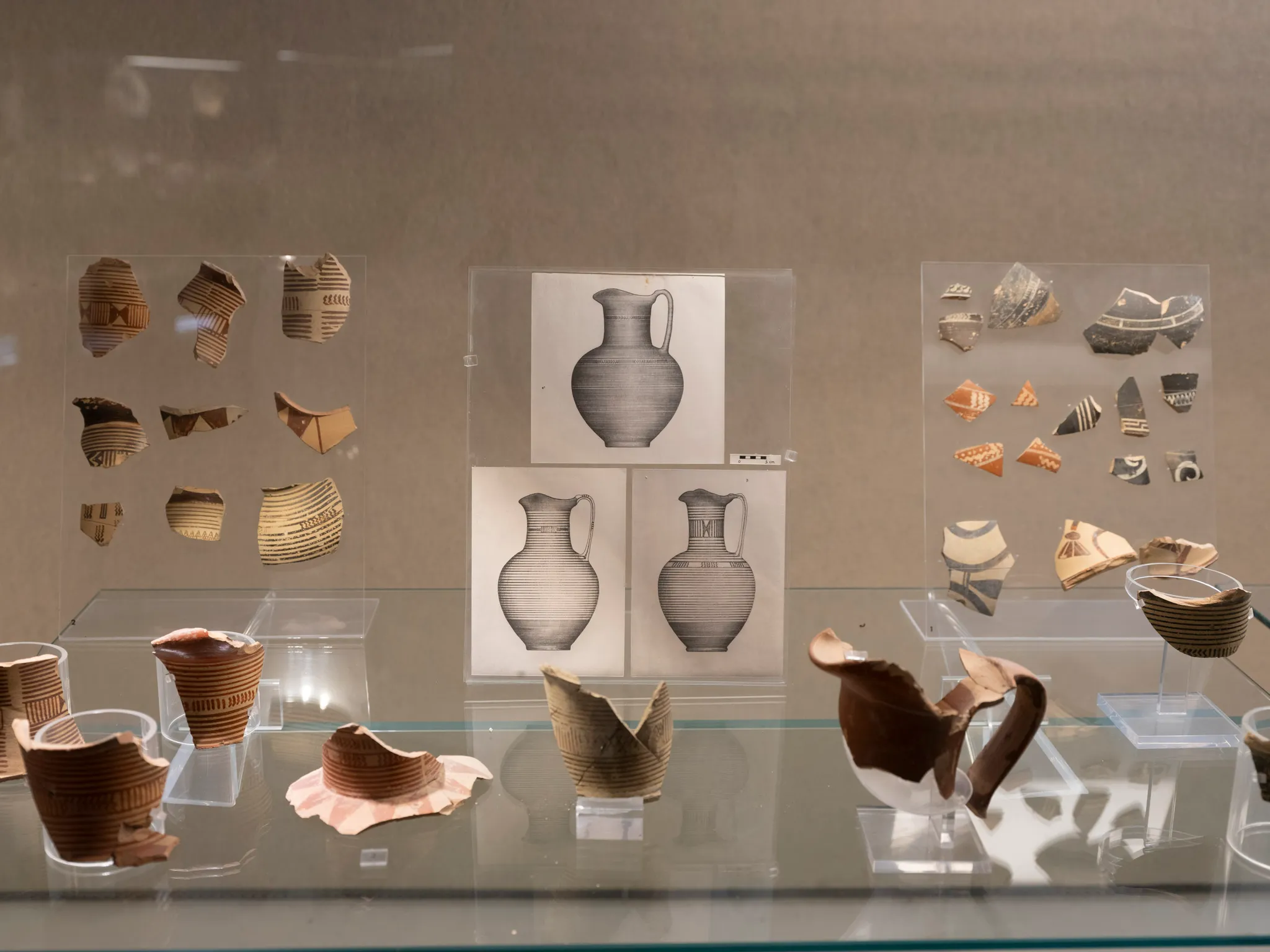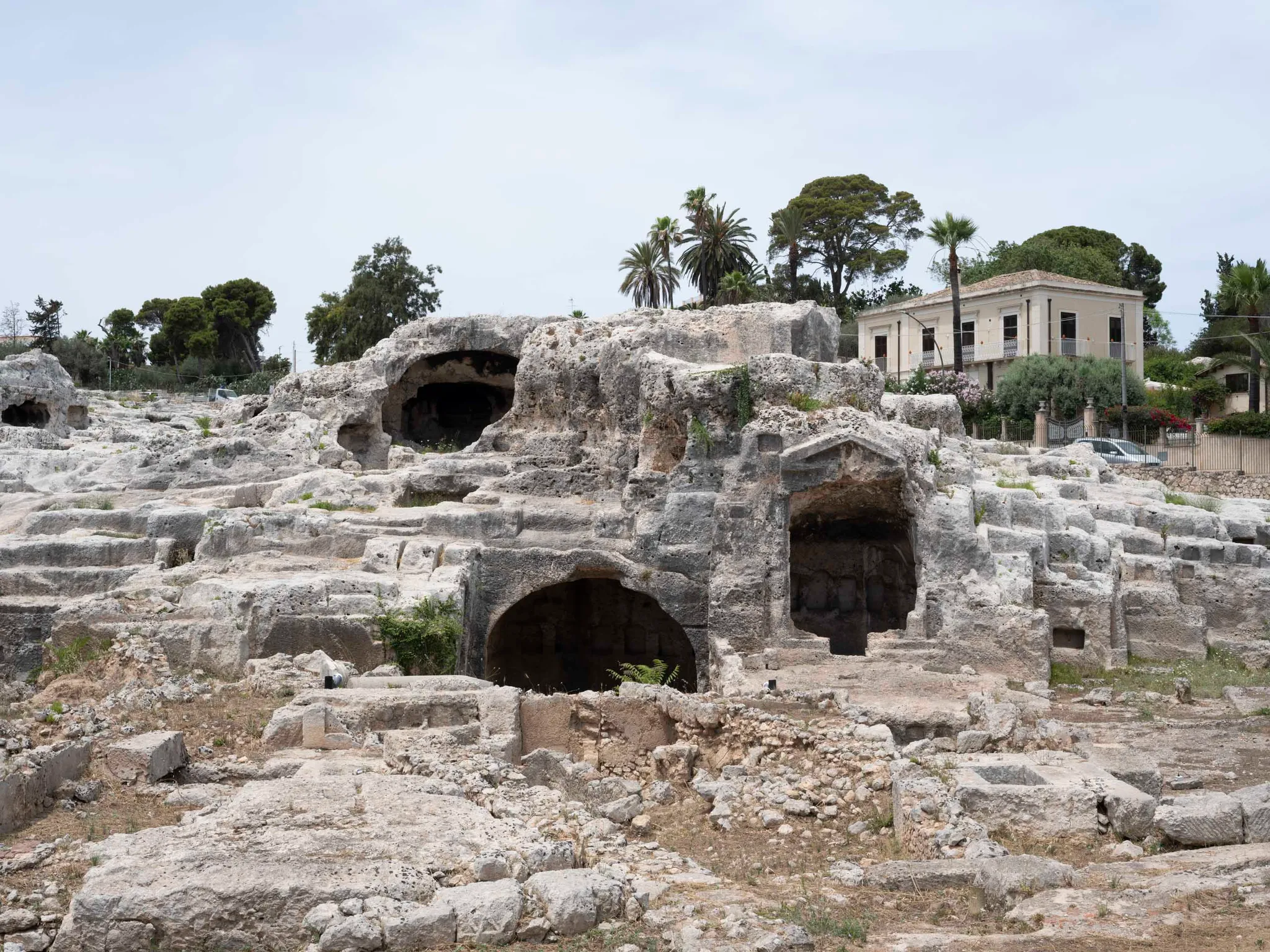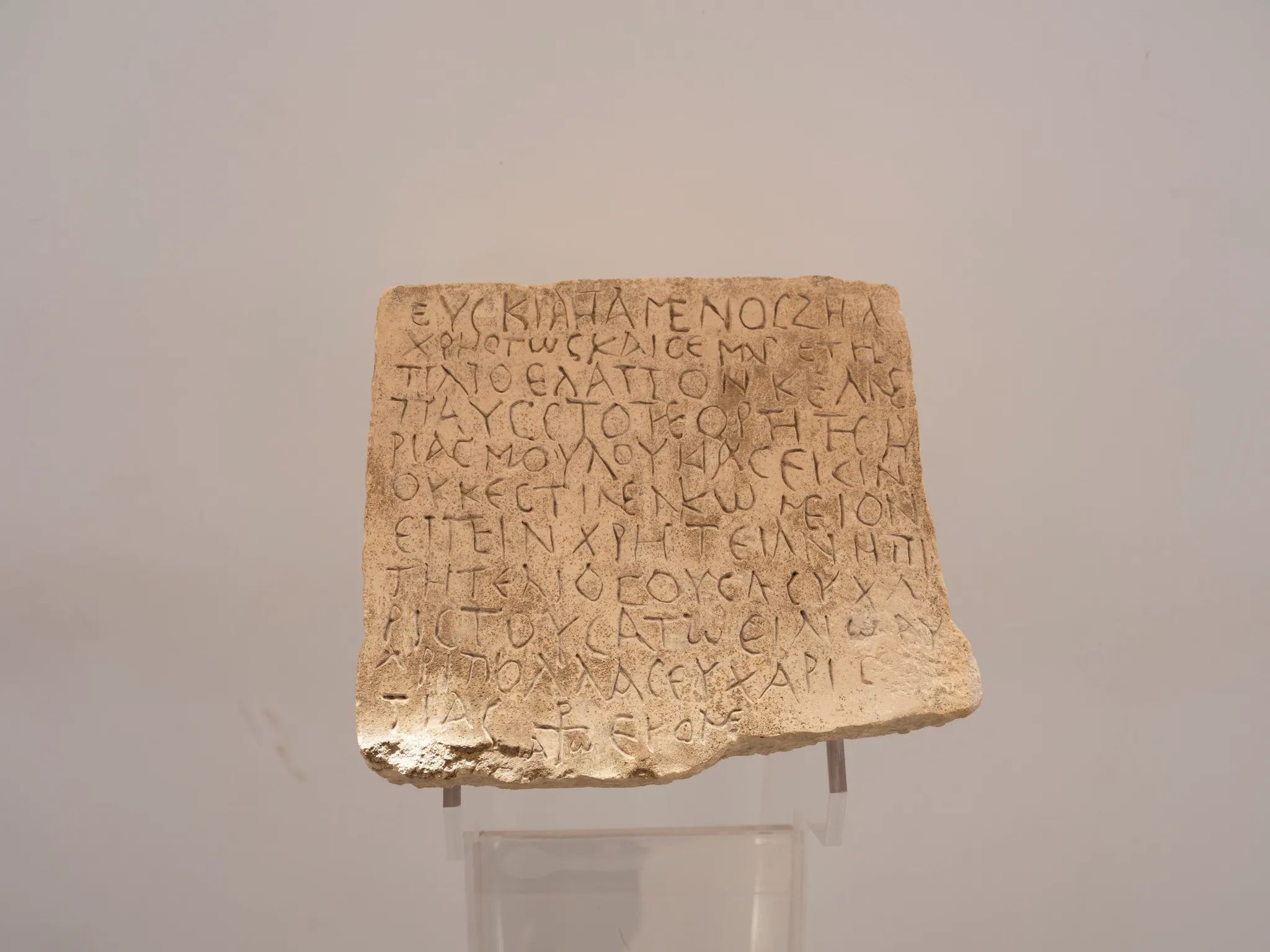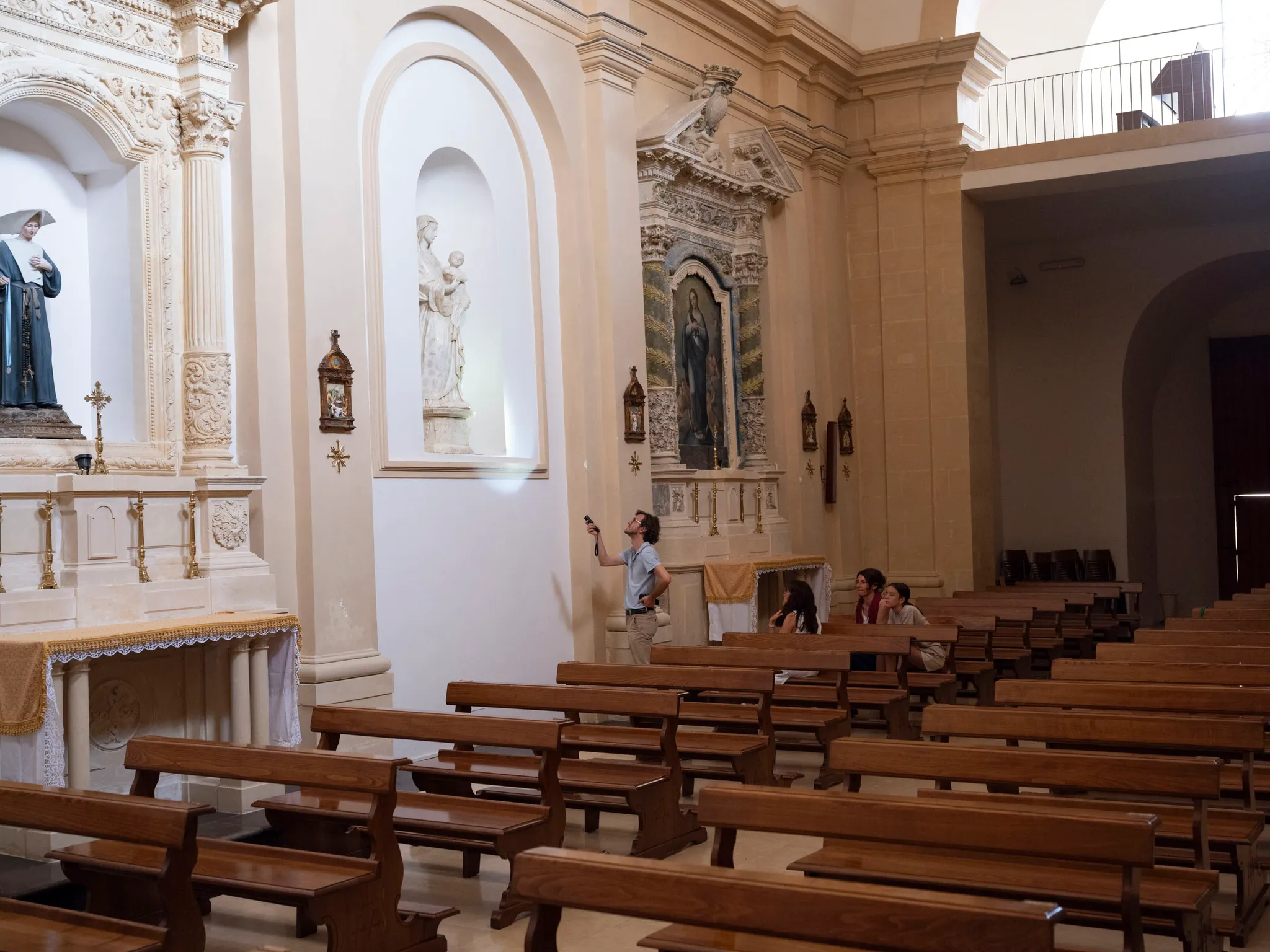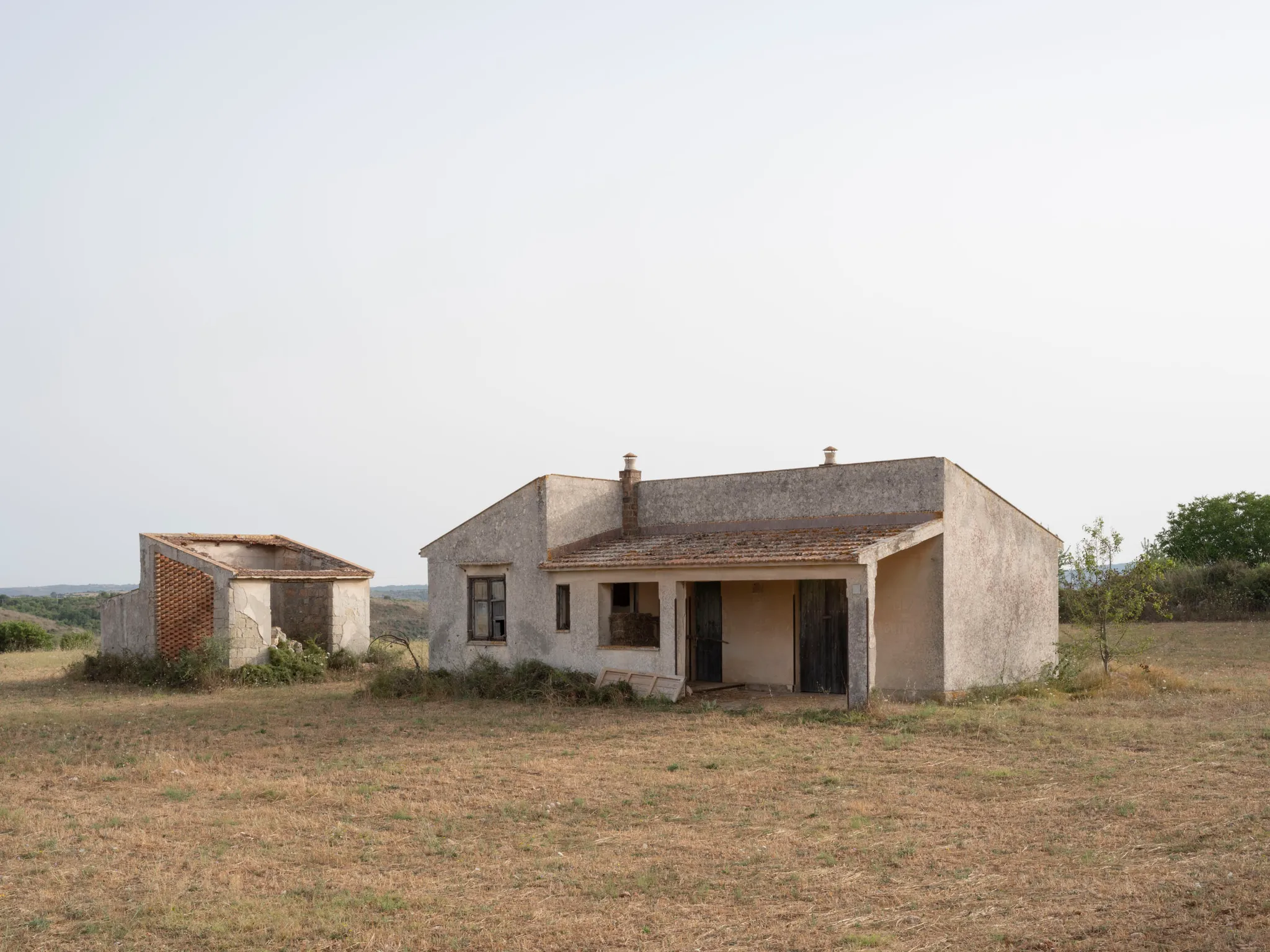The beautiful painting was in the church of Santa Maria Annunziata when a brilliant inspector of the Archaeological Museum, the Syracusan Enrico Mauceri, recognised its importance in 1897. Paolo Orsi had entrusted him with the task of drawing up an inventory of state-owned works in the churches of the province. Antonello's works were rare: collectors and museums on both sides of the Atlantic were on the alert so as not to miss any opportunity, connoisseurs sharpened their sights in search of new attributions. A few years later, in 1902, a scholar from Messina of unparalleled skill in archival research, Gaetano La Corte Cailler, published the contract signed by Antonello and the commissioner of the work, Giuliano Maniuni, in 1474. There was thus also a date, clarifying at what point in the painter's career this new piece was inserted.
The painting, however, was in a very poor state of preservation and was thus transferred to canvas by the best Italian restorer of the time, the Milanese Luigi Cavenaghi, immediately after its purchase by the state in 1907. Since then, the work has been constantly subjected to the highest degree of attention, with further passages, from the Uffizi restoration laboratory in 1936 to the last intervention at the Central Institute for Restoration in 2005, prior to the Antonello exhibition at the Scuderie del Quirinale, where the painting was featured.
An angel with a head so perfect it seems to be made of crystal, crowned by two wise eyes and a humbly open mouth, is whispering to the Madonna almost a personal confidence, an event that happened the day before outside that house overlooking the river, where people row and fish. She remains with her eyes on the book, and she draws herself into a corner, to make room for that third, far more unsettling presence, which can be seen in the painting: the column, which could not be more of a protagonist than this. A painting-manifesto, which unfolds the power of the spatial research already explored by Antonello and a handful of convinced assertors, especially in that decade, of the relevance of solids, geometries and volumes in painting. The centrality of looking into perspective, serenely, with a light that barely scratches bodies built with Italian care and Spanish elegance could not be stated more clearly.
